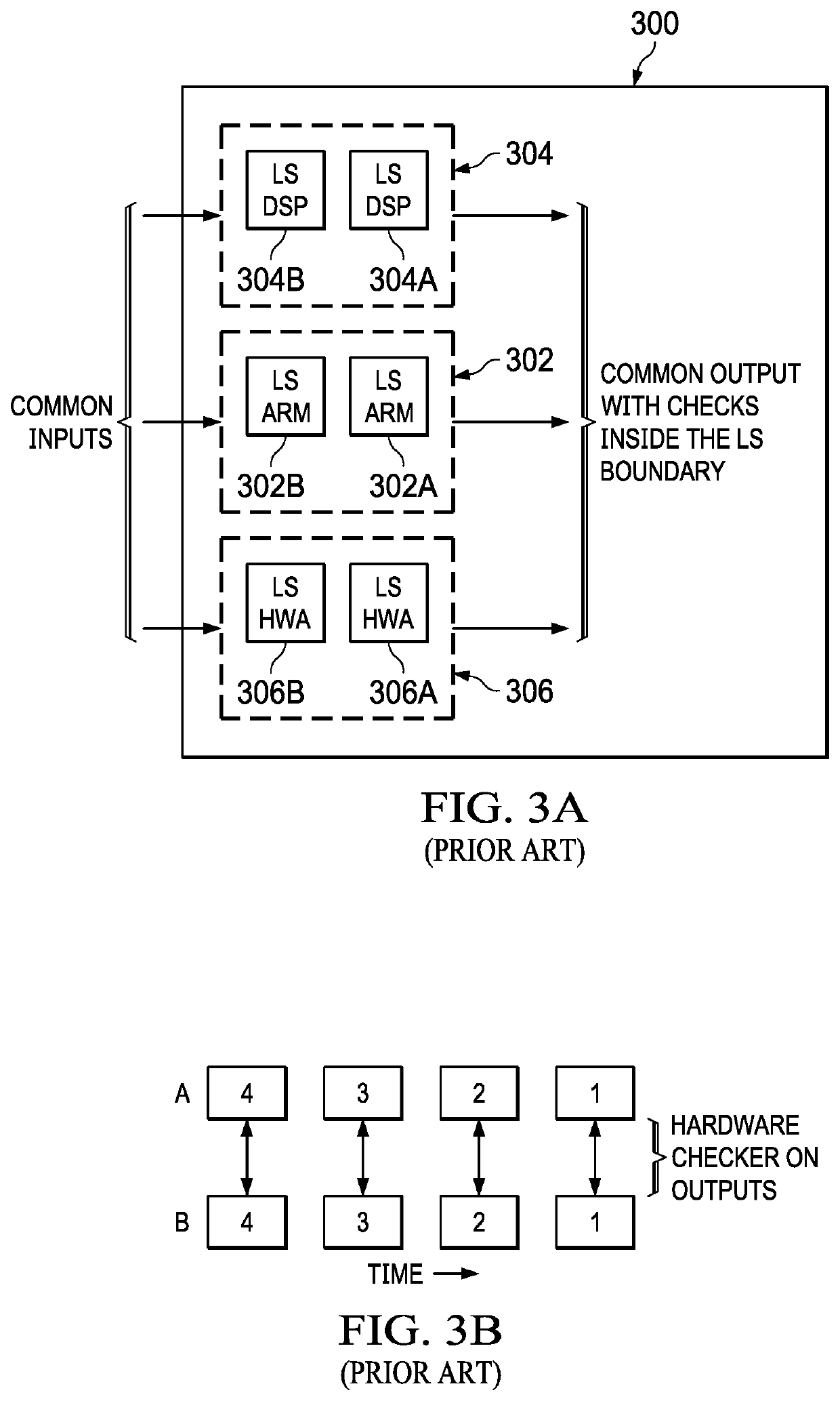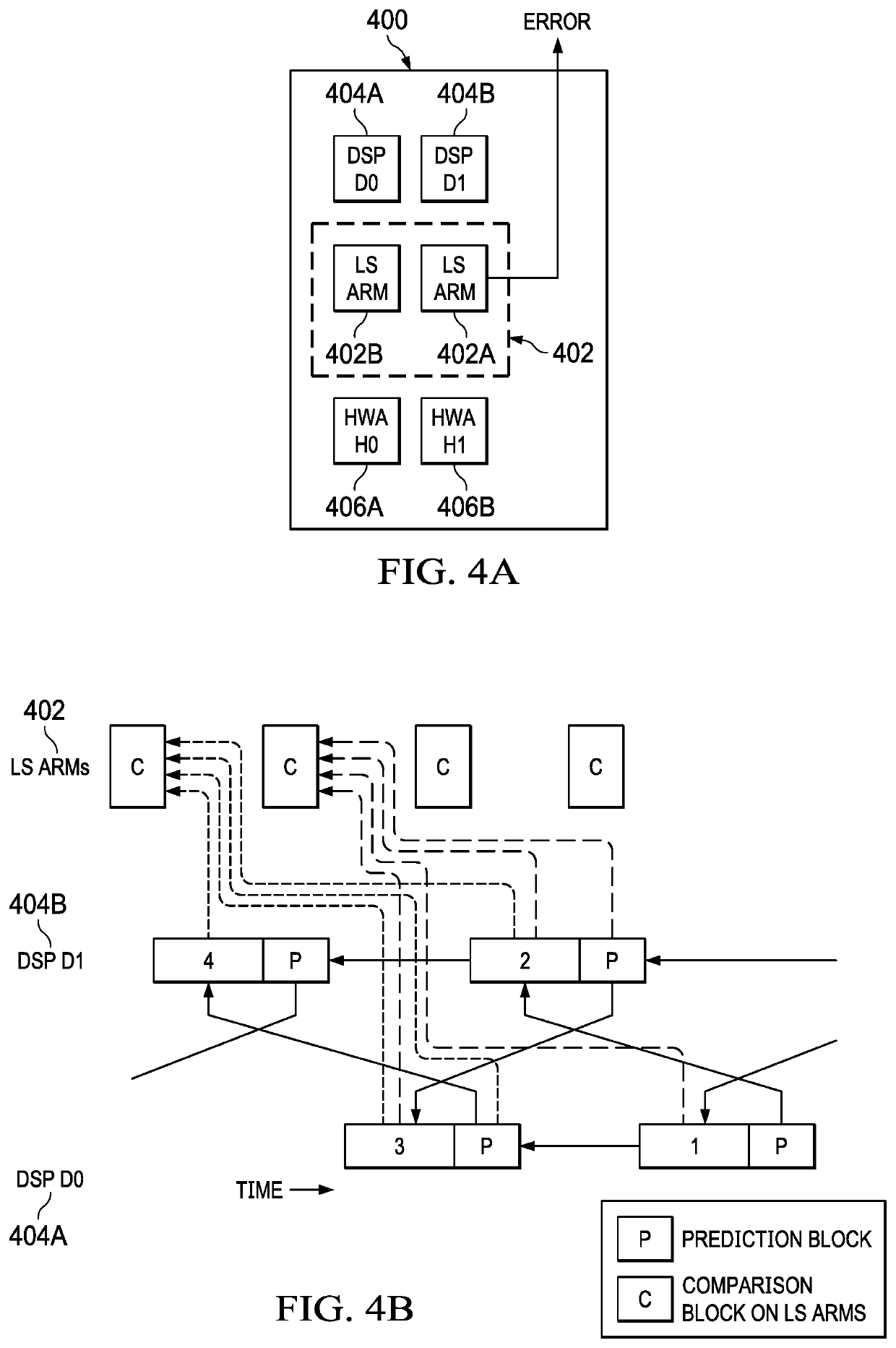Alternating frame processing operation with predicted frame comparisons for high safety level use
a frame comparison and alternating frame processing technology, applied in the direction of selective content distribution, using reradiation, instruments, etc., can solve the problems of increasing the demands on the soc device, increasing the burden, and putting a large burden on the system, so as to achieve the effect of not reducing the risk
- Summary
- Abstract
- Description
- Claims
- Application Information
AI Technical Summary
Benefits of technology
Problems solved by technology
Method used
Image
Examples
Embodiment Construction
[0020]Referring now to FIG. 1, a vehicle 100 is shown. The vehicle 100 includes a series of cameras or optical sensors. Left camera 102 and right camera 104 provide images from the front of the vehicle 100 for lane departure warnings, traffic sign recognition, collision alert and object detection. Left LIDAR (light detecting and ranging) sensor 106 and a right LIDAR sensor 108 provide images from the front of the vehicle 100 for lane and object detection. These cameras and LIDAR sensors provide the inputs to various advanced driver assistance systems (ADAS). It is understood that cameras and LIDAR sensors are just examples and many other sensors, such as radar and ultrasonic and the like can be used as well.
[0021]Referring now to FIG. 2, cameras 102 and 104 are connected to a front camera module 202. LIDAR sensors 106 and 108 are connected to a LIDAR module 204. The front cameras module 202 and the LIDAR module 204 are connected to a sensor fusion module 210 which integrates the var...
PUM
 Login to View More
Login to View More Abstract
Description
Claims
Application Information
 Login to View More
Login to View More - R&D
- Intellectual Property
- Life Sciences
- Materials
- Tech Scout
- Unparalleled Data Quality
- Higher Quality Content
- 60% Fewer Hallucinations
Browse by: Latest US Patents, China's latest patents, Technical Efficacy Thesaurus, Application Domain, Technology Topic, Popular Technical Reports.
© 2025 PatSnap. All rights reserved.Legal|Privacy policy|Modern Slavery Act Transparency Statement|Sitemap|About US| Contact US: help@patsnap.com



